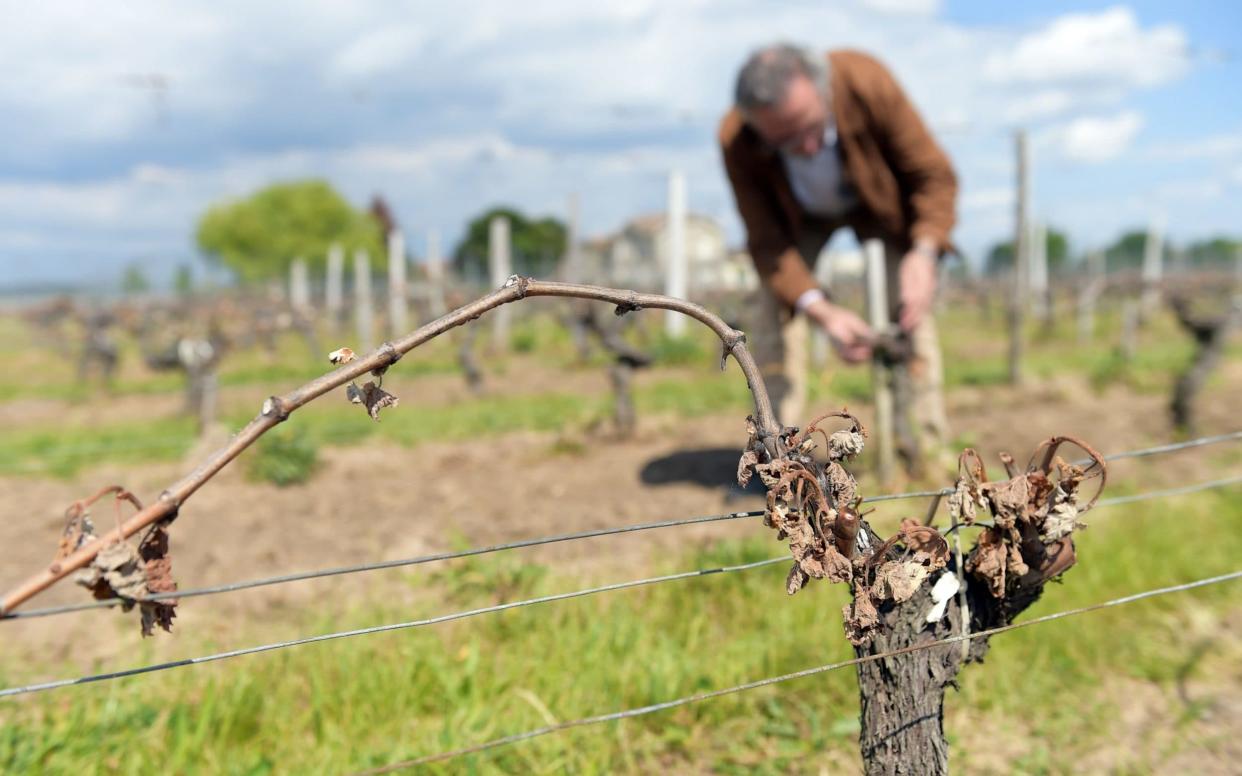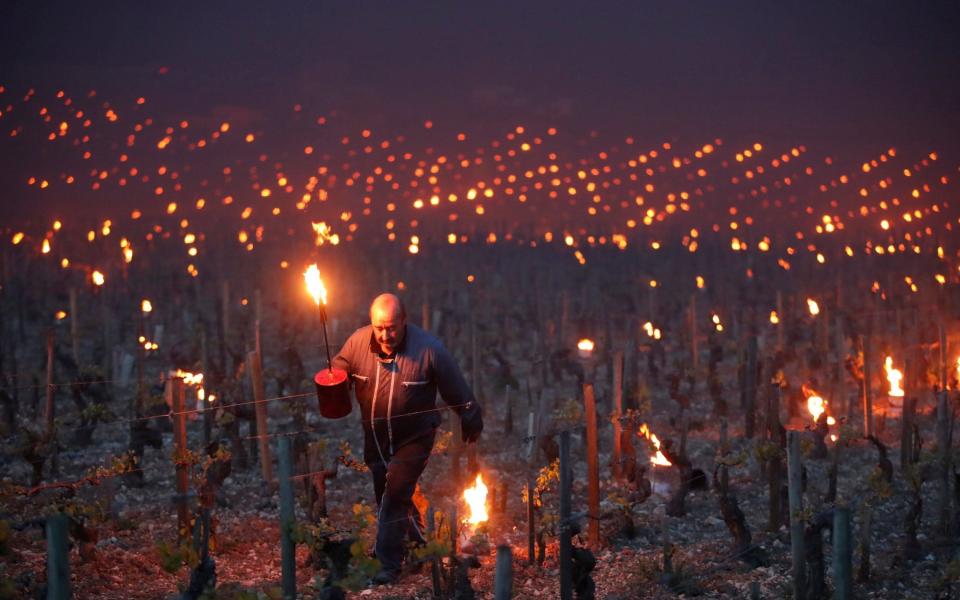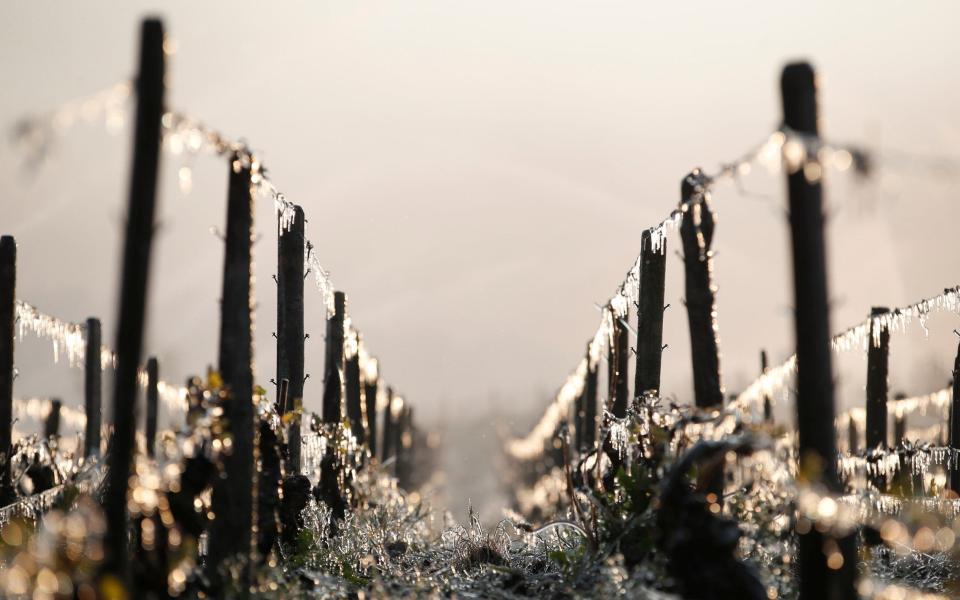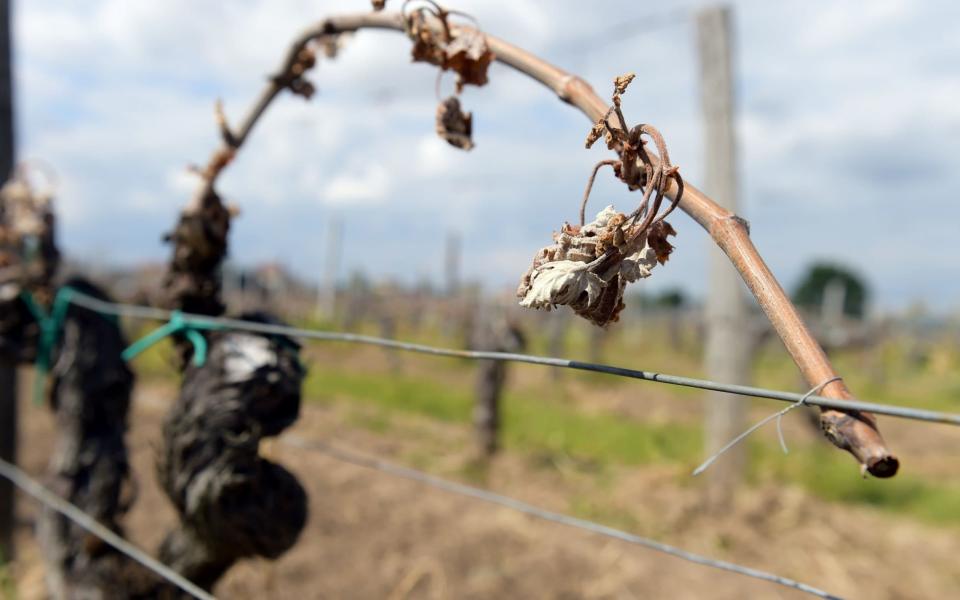French winegrowers hope June bloom saves harvest after up to 90pc of vines were destroyed

Frenchwinegrowers are desperately hoping for a June bloom to save their harvest after a late freeze in April destroyed up to 90 per cent of some Bordeaux vines.
Producers frantically tried to battle the unseasonal cold snap by lighting fires in oil drums, carefully positioned between the rows, in an attempt to stop vines freezing at night.
They also used giant fans to stop cold damp air from settling on the plants. Emergency services flew helicopters over vineyards in another, equally unsuccessful attempt to battle freezing condensation.

Few plants were saved. The freeze left a grim landscape of shrivelled vines. The bitter cold struck twice in one week, ravaging the fragile shoots and buds that had emerged early after mild temperatures in March.
Winemakers are nervously anticipating the crucial June flowering phase, hoping that pollination will occur, saving at least some of their vines.
Bordeaux normally produces nearly £2 billion of wine each year and the loss could be as high as £1.3 billion, according to CIVB, a wine industry association in the region.
François Despagne, who produces a Saint-Emilion Grand Cru, Château Grand Corbin-Despagne, said: “Ninety per cent of our vineyard was damaged, more than I’ve seen in 20 years as a winegrower.”

Jean-François Galhaud, head of the Saint-Emilion Wine Council, which represents nearly 1,000 growers, said: “We have a hangover. Eighty per cent of our vineyard was hit by the frost. It’s all our work that has been wiped out.”
Rows of his Merlot vines stood barren, their leaves curled up.
Winegrowers say they have not suffered such a damaging frost since 1991.
The frost also hit all German vineyards. “This is extremely rare,” said Ernst Buescher of the German Wine Institute.
In Italy’s Tuscany region, 20 per cent of vines have been destroyed, valued at about £70 million, according to the Confagricoltura farmers’ association.
“Let’s cross our fingers that we have another 1961, a year with a small harvest that was of very good quality,” Mr Galhaud said.

But experts describe the grapes that have survived as “normal quality”.
Stéphane Toutoundji, a wine expert who advises winegrowers throughout the huge Bordeaux region, said: “The quality of the grapes will depend on the blooms in June.”
If the buds fail to resume growth by next month, the harvest will be halved in volume. With some of France’s most expensive wines affected, the financial consequences could be severe.
Only 15 per cent of French vineyards are insured because of the high cost of premiums. French growers fear they will lose out this year to producers in countries such as Australia and South Africa.
Local authorities may step in to help winegrowers by paying them partial unemployment benefits, reducing national insurance contributions and providing financial support.
An abundant harvest last year may also help to fill the gaps. Many winegrowers keep approved amounts of wine from previous years in case of natural catastrophes.
After a poor harvest in 2013, Bordeaux growers had been recovering with three good vintage years.
The weather damage will increase the cost of their wines, making it more difficult for them to compete against cheaper Spanish or New World wines.
Southern French producers have staged a series of protests over Spanish wines which they say are flooding the market, with brand names that look French, identified only as “produce of the EU”.

 Yahoo News
Yahoo News 
